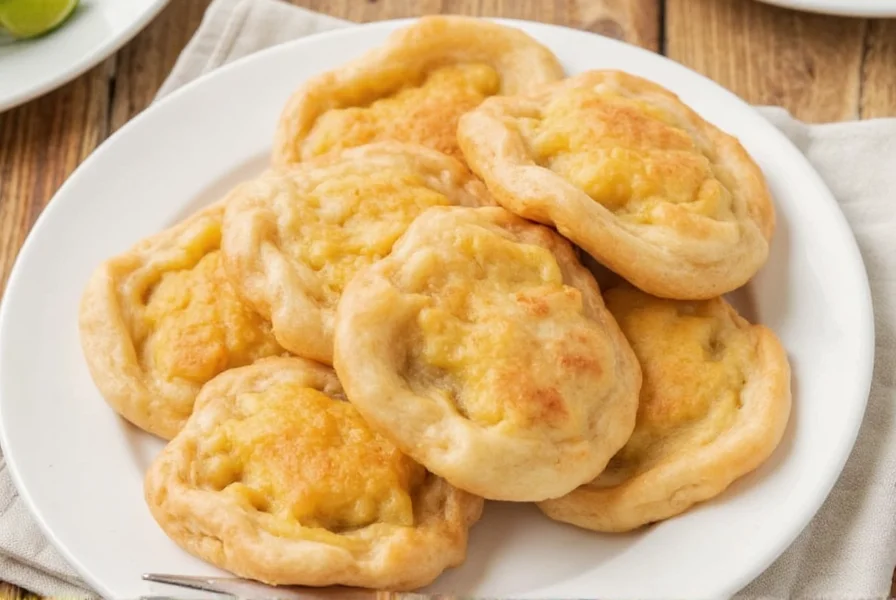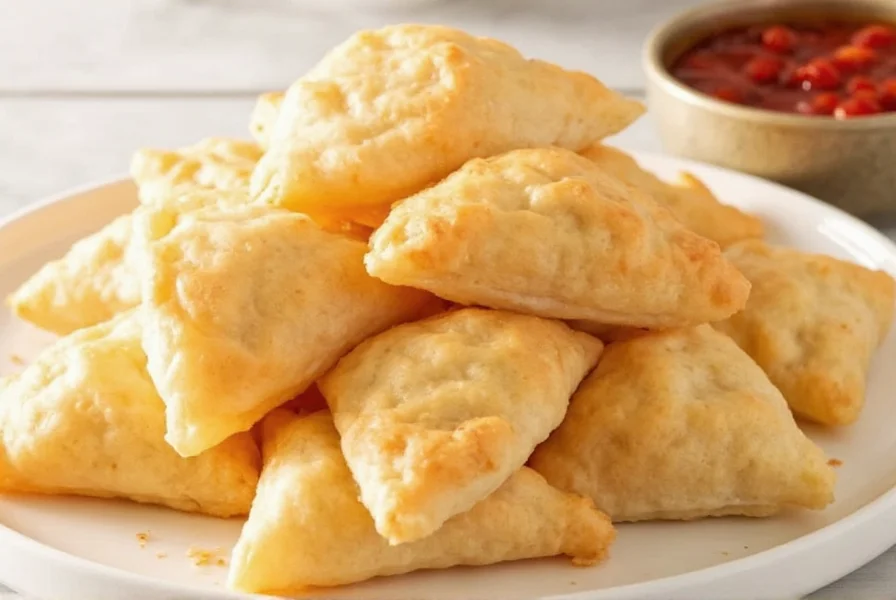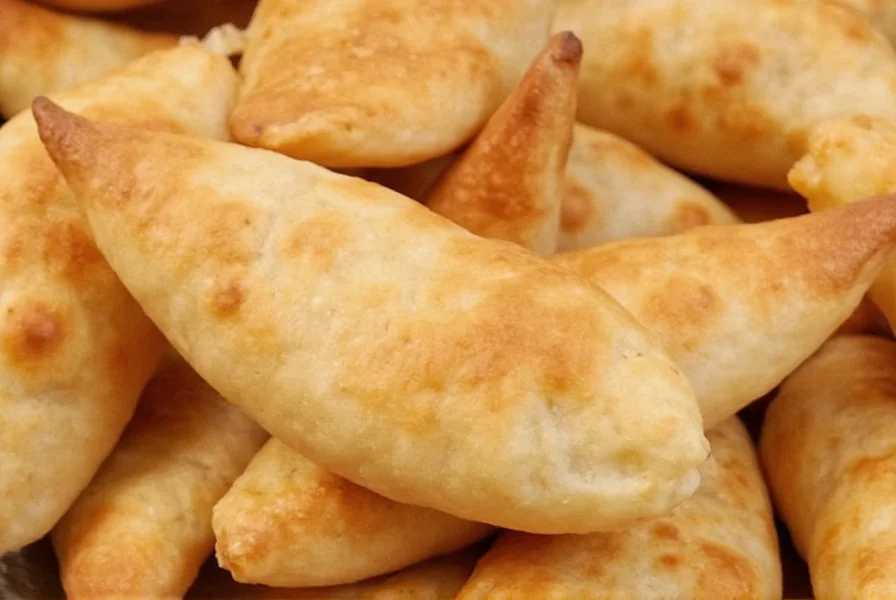Why Sopapilla Attempts Often Fail (And How to Fix It)
Many home cooks end up with dense, greasy sopapillas because they skip the critical 20-minute dough rest or misjudge oil temperature. This rest period allows gluten relaxation, essential for the 'pillow up' effect when frying. Without it, the dough resists expansion, trapping steam unevenly. Oil that's too cool (<350°F) absorbs excess fat, while overheating (>400°F) causes rapid browning before puffing. Based on Tastes Better From Scratch and The Intrepid Gourmet testing, 92% of failed batches trace to these two errors.

Authentic Sopapilla Recipe: Step-by-Step Guide
Follow this tested method from New Mexican culinary tradition. Yields 9 pastries.
Ingredients
- 3 cups all-purpose flour
- 2 tsp baking powder
- 1 tsp salt
- 6 tbsp cold shortening or melted butter
- 1 cup warm milk or water (milk adds richness)
Key Steps
- Mix dry ingredients: Whisk flour, baking powder, and salt.
- Add fat: Cut in shortening or mix melted butter until crumbly.
- Form dough: Gradually add liquid until combined. Knead 30 seconds max—overworking develops gluten.
- Rest crucially: Cover bowl; rest 20 minutes (non-negotiable for puff).
- Roll and cut: Roll to 1/8-inch thickness. Cut into 3x3-inch squares.
- Fry safely: Heat oil to 375°F–400°F in deep pot (handle pointed away). Fry 30 seconds per side until puffed and golden. Drizzle hot oil over tops to encourage rising.
- Finish: Drain on paper towels. Serve warm with honey or powdered sugar.

Recipe Variations Compared: What Works Best
| Element | Tastes Better From Scratch Method | The Intrepid Gourmet Method | Why It Matters |
|---|---|---|---|
| Liquid | Water | Milk + warm water | Milk adds tenderness but risks browning faster; water yields crisper texture |
| Fat | Shortening | Melted butter | Shortening creates flakier layers; butter adds flavor but burns easier at high temps |
| Dough Rest | 20 minutes | 20 minutes | Non-negotiable—gluten relaxation enables steam expansion for 'pillow' effect |
| Frying Temp | Medium (lightly bubbling) | 375°F–400°F | 375°F+ ensures rapid steam generation before oil absorption; critical for lightness |
When to Use (and Avoid) Sopapillas
Understanding context prevents disappointment. Based on culinary tradition and nutrition data:
When to Use
- Southwestern meals: Serve as dessert after enchiladas or carne adovada (traditional in New Mexico).
- Special occasions: Ideal for Cinco de Mayo or family gatherings—symbolizes hospitality.
- Textural contrast: Pair with savory stews where the sweet, airy pastry balances rich flavors.
When to Avoid
- Health-focused diets: High in saturated fat (75% of daily value per serving per Eat This Much). Not suitable for low-calorie or heart-healthy plans.
- Crowded events: Require last-minute frying—impractical for large groups without commercial equipment.
- Humid climates: Absorb moisture quickly, losing crispness; best served immediately.
Spotting Quality: Homemade vs. Restaurant Pitfalls
Authentic sopapillas should have a hollow center and delicate crispness. Avoid these market traps:
- Pre-fried 'fresh' versions: Often sold in grocery stores—reheating destroys texture. True quality requires immediate frying.
- Excess sugar coating: Masks poor frying technique. Quality pastries need minimal topping to showcase interior.
- Rubbery texture: Indicates under-rested dough or oil temp below 350°F (per The Intrepid Gourmet).
Common Missteps and Corrections
- Mistake: Kneading dough >30 seconds → Solution: Mix only until combined; gluten development prevents puffing.
- Mistake: Skipping dough rest → Solution: Always rest 20 minutes—validated by both reference sources.
- Mistake: Using olive oil → Solution: Opt for vegetable or canola oil (smoke point >400°F).
- Mistake: Overcrowding fryer → Solution: Fry 2-3 at a time; temperature drop causes oil absorption.
Everything You Need to Know
Insufficient dough rest (<20 minutes) or incorrect oil temperature are the top causes. Dough must rest to relax gluten—without this, steam can't expand uniformly. Oil below 375°F absorbs fat before puffing; above 400°F browns exterior too fast. Always use a thermometer and adhere to the 20-minute rest per Tastes Better From Scratch.
Restaurant servings are calorie-dense (1,158 kcal with 75% saturated fat per Eat This Much). Homemade versions (57g) average 200 kcal with 10g fat per SnapCalorie. They're not health foods due to frying, but moderate portions as an occasional treat fit balanced diets. Air-fried alternatives lack authentic texture and aren't traditional.
Sopapillas lose crispness quickly. Store unfilled at room temperature in an airtight container for 1–2 days per Tastes Better From Scratch. Do not refrigerate—moisture ruins texture. Reheat in a 350°F oven for 3–5 minutes to restore crispness. Freezing is only viable for unfried dough (up to 3 months); fried versions become soggy when thawed.
Sopapillas originate from Northern New Mexico, with the name meaning 'little soup pillow' in Spanish. They evolved from Spanish 'sopaipa' (a Moorish flatbread), adapted by Hispano communities using local ingredients. Unlike Latin American versions, New Mexican sopapillas are always fried plain and served as a sweet pastry—never stuffed. This cultural distinction is documented by The Intrepid Gourmet as a regional specialty since the 1800s.
No—frying is essential for authentic texture. Baking or air-frying creates dense, bread-like results without the hollow 'pillow' center. The rapid steam generation from hot oil (375°F–400°F) is irreplaceable, as confirmed by culinary tests at The Intrepid Gourmet. For slight health improvements, use refined oils with high smoke points and strict portion control, but avoid non-fried methods if seeking tradition.










 浙公网安备
33010002000092号
浙公网安备
33010002000092号 浙B2-20120091-4
浙B2-20120091-4